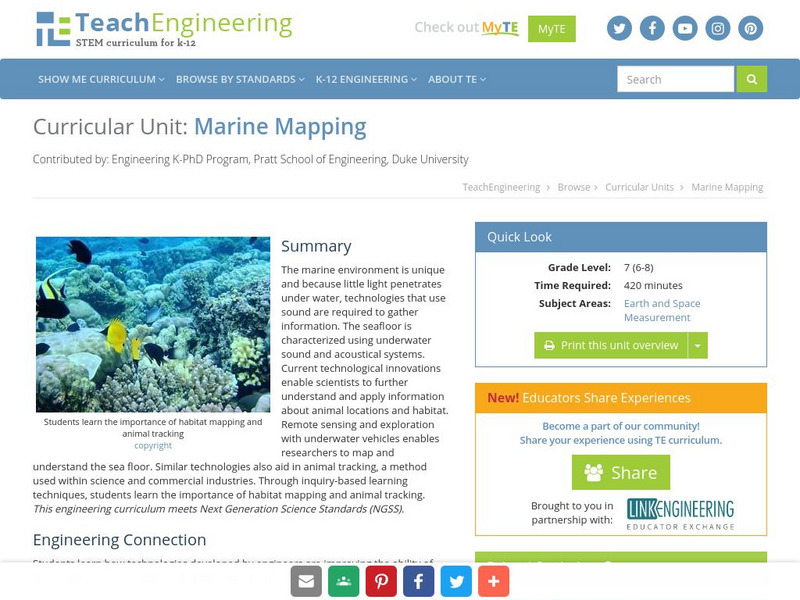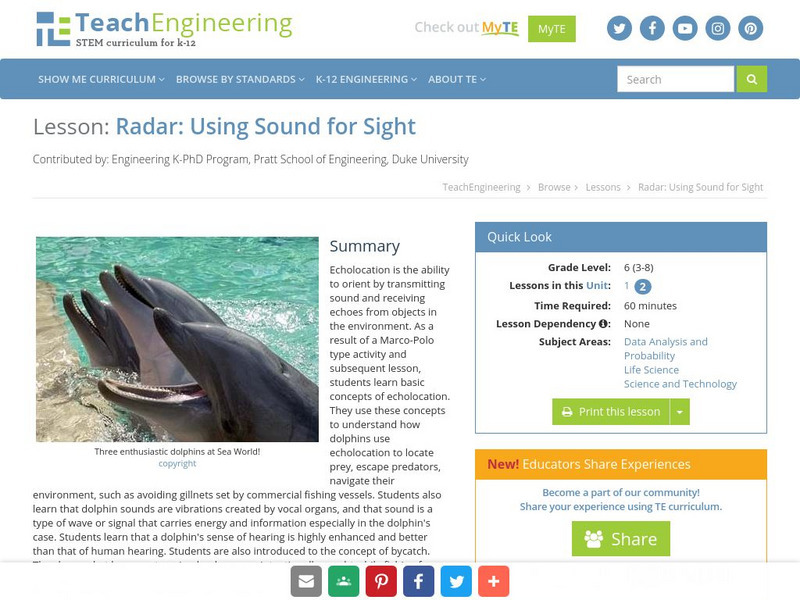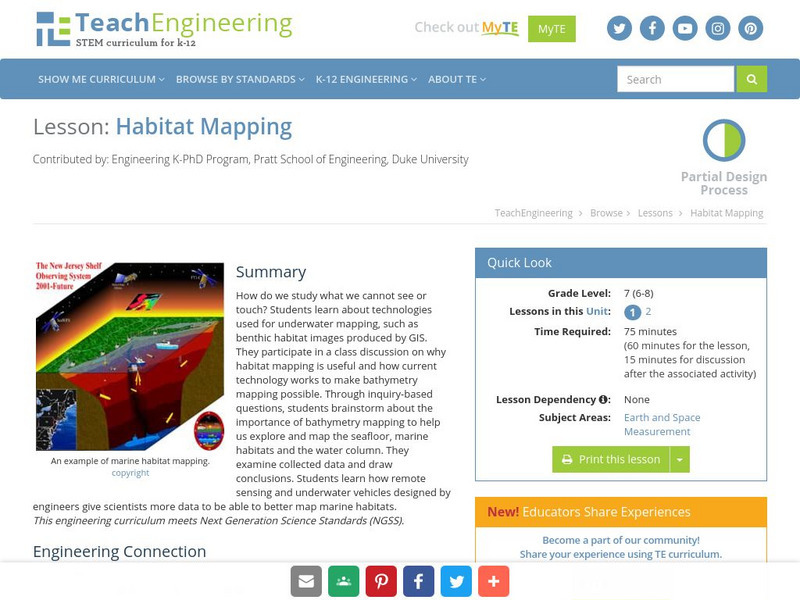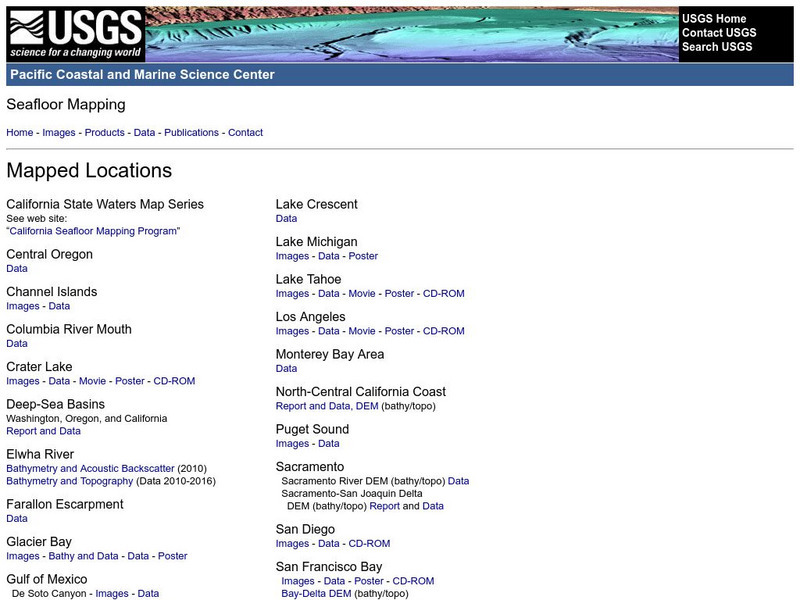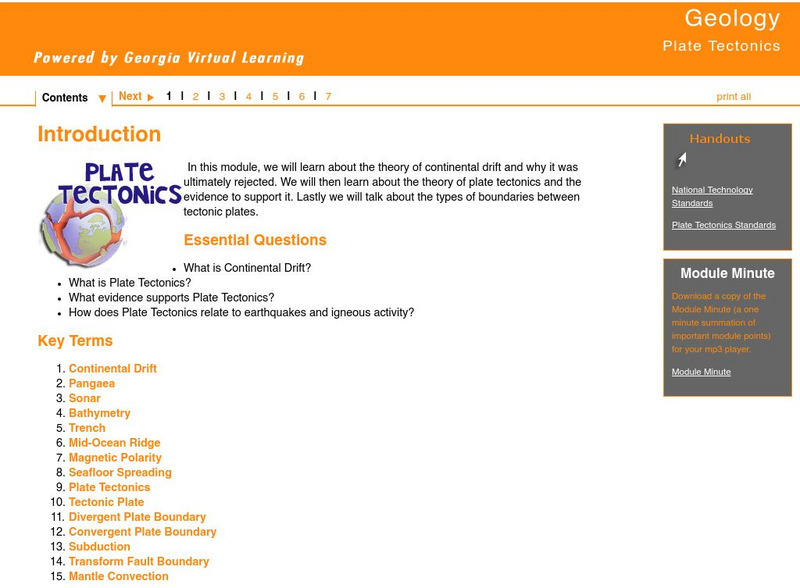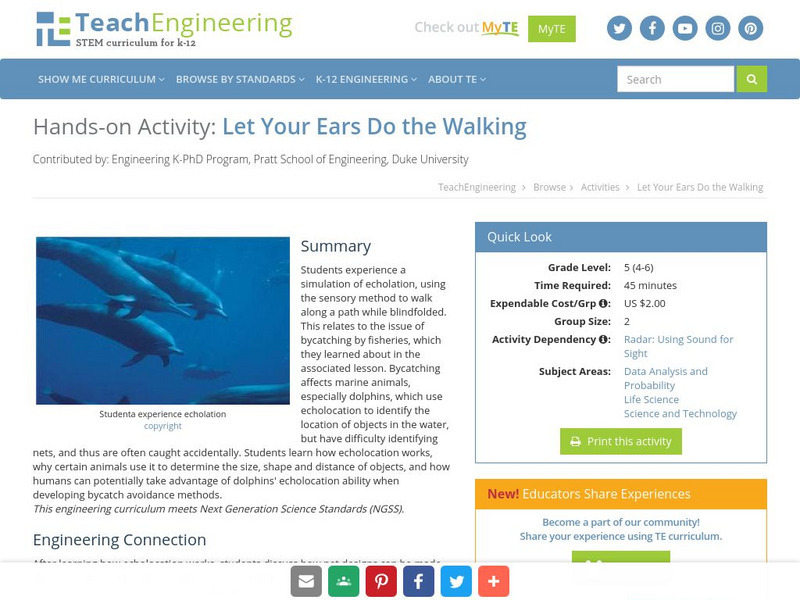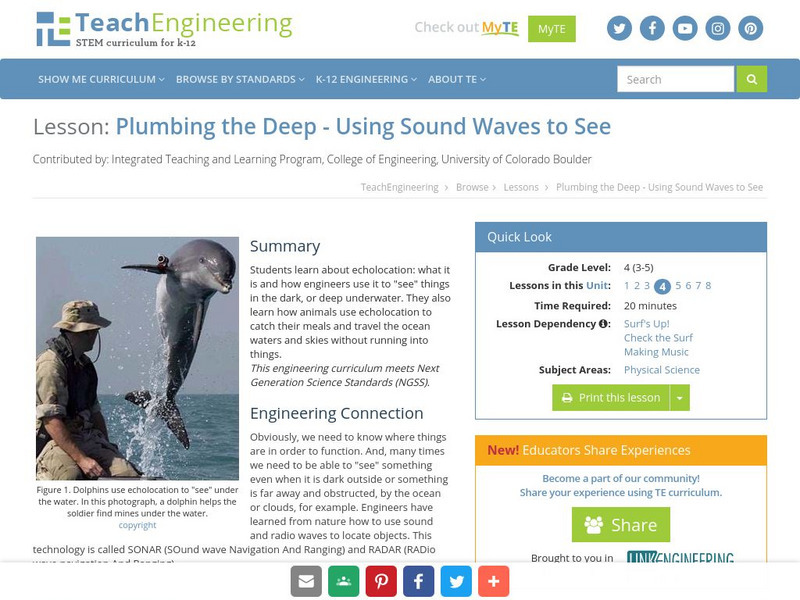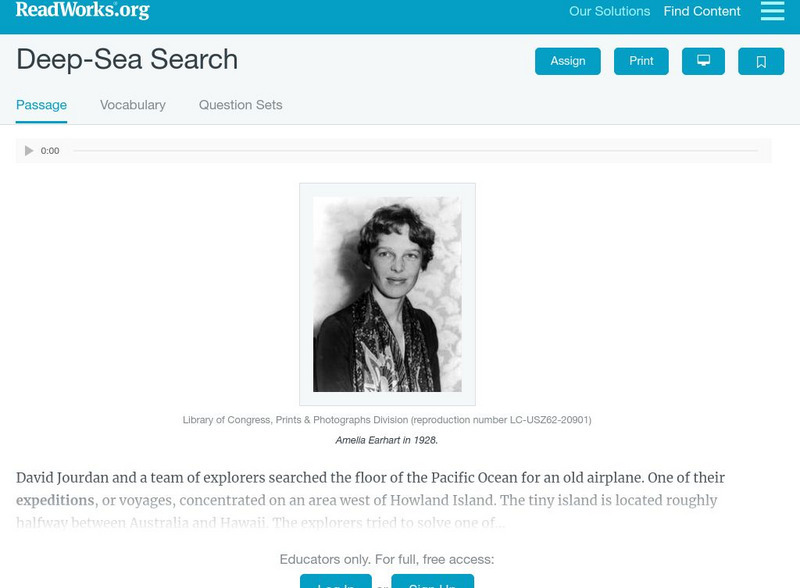Curated OER
Space: The Final Frontier
Sixth graders construct a graph to demonstration information that they've learned about the solary system. They also write or illustrate a sonar or lunar eclipse.
Curated OER
Seeing Sound and Sonar
Young scholars grasp how underwater animals can "see" using sound waves. They practice making inferences, and build a conceptual understanding of sonar radar.
Georgia State University
Georgia State University: Hyper Physics: The Physics of Loudspeakers
This college-level physics course on acoustics provides a variety of charts and short descriptions of the physics involved in using loudspeakers and audio equipment. Related links.
Scientific American
Scientific American: A Field Guide to Bats : In Depth Reports
Uncover the evolutionary past of the mysterious bats. Find out about their amazing ability to use sonar, the threat of rabies they carry, and conservation efforts to save the species.
TeachEngineering
Teach Engineering: Don't Bump Into Me!
Students' understanding of how robotic ultrasonic sensors work is reinforced in a design challenge involving LEGO MINDSTORMS NXT robots and ultrasonic sensors.
TeachEngineering
Teach Engineering: Sound and Light
The Sound and Light unit provides students with an understanding of sound and light waves through the theme of the "Sunken Treasure," a continuous story line throughout the lessons. In Lessons 1-5, students learn about sound, and in...
TeachEngineering
Teach Engineering: Marine Mapping
The marine environment is unique and requires technologies that can use sound to gather information since there is little light underwater. The seafloor is characterized using underwater sound and acoustical systems. Current...
TeachEngineering
Teach Engineering: Sound for Sight
Echolocation is the ability to orient by transmitting sound and receiving echoes from objects in the environment. As a result of a Marco-Polo type activity and subsequent lesson, students learn basic concepts of echolocation. They use...
TeachEngineering
Teach Engineering: Habitat Mapping
The marine environment is unique and requires technologies that can use sound to gather information since there is little light underwater. In this lesson, the students will be shown benthic habitat images produced by GIS. These images...
TeachEngineering
Teach Engineering: How Does an Ultrasonic Sensor Work?
Students learn how ultrasonic sensors work, reinforcing the connection between this sensor and how humans, bats, and dolphins estimate distance.
US Geological Survey
Usgs: Pacific Seafloor Mapping Project
This site describes the details of a project to map the seafloor of the Pacific Ocean. Includes images, movies, links to related information, and more.
PBS
Nova Online: Submarines, Secrets and Spies
The companion site to a NOVA program on the role of submarines in the Cold War, this site provides a close-up view of life on a nuclear submarine. In addition, the transcript of the program is available, which details some of the ways...
Georgia Department of Education
Ga Virtual Learning: Plate Tectonics
In this interactive tutorial you will learn about the theory of continental drift and why it was ultimately rejected. Then learn about the theory of plate tectonics and the evidence to support it. Lastly discover the types of boundaries...
TeachEngineering
Teach Engineering: Let Your Ears Do the Walking
In the previous lesson, students learned about the issue of bycatching by fisheries and how it affects marine habitats. Dolphins are one of the main species affected by bycatching. Dolphins use echolocation to identify the location of...
TeachEngineering
Teach Engineering: Map That Habitat
Historically, sea floor mapping occurred with a more simple data collection method: soundings. Soundings are taken by dropping a weight with a pre-measured rope off the side of the boat and noting the measurement on the rope when the...
TeachEngineering
Teach Engineering: Plumbing the Deep: Using Sound Waves to See
In this instructional activity, students learn about echolocation: what it is and how engineers use it to "see" things in the dark, or deep underwater. Also, they learn how animals use echolocation to catch their dinner and travel the...
Read Works
Read Works: Deep Sea Search
[Free Registration/Login Required] An informational text about Amelia Earhart and efforts made to find the airplane she was flying when she disappeared. A question sheet is available to help students build skills in reading comprehension.
TeachEngineering
Teach Engineering: Echolocation in Action!
In this activity, students will experience echolocation themselves. They actually try echolocation by wearing blindfolds while another student makes snapping noises in front of, behind, or to the side of them.
Physics Aviary
Physics Aviary: Sonar Velocity Problem
Students must find out the speed of a torpedo based on readings from a sonar display.
CK-12 Foundation
Ck 12: Plix: Seafloor: Sonar Boats
[Free Registration/Login Required] This site includes a brief example of how sound detector boats work. It also includes an assessment for students to show their knowledge of using sound waves to predict the depth of water.
Alabama Learning Exchange
Alex: Sonar Mapping of the Ocean Floor
Mapping the ocean floor must be done by indirect observation. One method involves bouncing a sonar signal off of the ocean floor and measuring the length of time this signal takes to return. This length can be translated into distance:...
Ducksters
Ducksters: Dolphins
Kids learn how dolphins eat, sleep, and live together. Bottlenose dolphins and orcas travel the ocean in pods.
Curated OER
Science Kids: Science Images: Sonar
This photo shows sonar profiles in the navigation room of a US research vessel.








